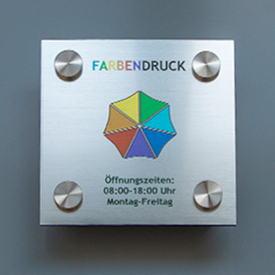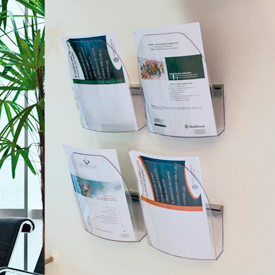Strategies to Improve Internal Communication
Sunday, December 1, 2024
 The introduction of digital tools is an important step towards optimizing internal communication. But without a well-thought-out strategy, even the most advanced technologies cannot reach their full potential. An effective communication strategy takes into account the needs and preferences of employees, promotes a culture of openness and supports company goals.
The introduction of digital tools is an important step towards optimizing internal communication. But without a well-thought-out strategy, even the most advanced technologies cannot reach their full potential. An effective communication strategy takes into account the needs and preferences of employees, promotes a culture of openness and supports company goals.Developing an effective communication strategy
To develop a communication strategy effectively, you need to take the following steps:✔
Needs analysis. Start with a thorough analysis of current communication practices and challenges. Survey employees to gain insight into their needs and preferences.✔
Objective setting. Define clear, measurable goals for your internal communications strategy. These could include improving employee satisfaction, increasing productivity or promoting a positive company culture.✔
Tool selection. Select the appropriate digital tools based on the needs analysis and the set goals. Make sure you choose a balanced combination of information and collaboration tools.✔
Policies and training. Develop clear guidelines for the use of the selected tools and provide training to ensure that all employees can use them effectively.Tips for promoting an open and transparent communication culture
1. Keep employees informed about company news, successes and challenges through regular updates. Use the full range of selected communication tools to do this.2. Implement mechanisms that make it easier for employees to give feedback and participate in decision-making processes. Digital survey and feedback tools can be particularly useful here.
3. Use internal communication to share successes and recognize employees for their contributions. A culture of appreciation promotes motivation and commitment.
4. Strive for transparency in communication. Explain decisions and provide insights into the company's strategic direction. This strengthens trust and a sense of belonging.
Implementing these strategies can be challenging, especially in larger or highly segmented organizations. But the benefits of a well-thought-out internal communications strategy – from increased employee satisfaction to improved business performance – are undeniable. In the next section, we will look at practical examples and case studies that show how companies have successfully digitized and optimized their internal communications.
Practical examples and case studies
 The theory behind optimizing internal communications is invaluable, but it's only by looking at real-world success stories that you can see how companies put these concepts into practice. Here are some examples and case studies that illustrate the transformative power of digital tools and effective communication strategies.
The theory behind optimizing internal communications is invaluable, but it's only by looking at real-world success stories that you can see how companies put these concepts into practice. Here are some examples and case studies that illustrate the transformative power of digital tools and effective communication strategies.Case study 1: Digital intranet as a central communication platform
A global technology company faced the challenge of effectively informing and engaging its rapidly growing, geographically dispersed workforce. The company found the solution by implementing a modern, digital intranet. This platform became the central hub for all company news, employee resources, and to foster internal community. Through personalized news feeds and social interaction opportunities, the company was able to create a vibrant, inclusive communication culture that significantly increased employee engagement and satisfaction.Case Study 2: Using Messaging Apps to Promote Team Communication
In a medium-sized manufacturing company, physical separation and shift work led to communication barriers between teams. By implementing a company-wide messaging app, these barriers were overcome. The app enabled teams to communicate in real time, share information quickly, and work together to solve problems. This not only led to improved collaboration, but also to a significant increase in operational efficiency.Case study 3: Improving feedback culture through digital survey tools
A professional services company was struggling with low employee engagement scores and was looking for ways to improve its corporate culture. Introducing regular, anonymous employee surveys using digital feedback tools enabled management to gain valuable insight into employee needs and concerns. The results led to targeted actions, including workplace improvements and the introduction of flexible working models. The result was a significant increase in employee engagement and satisfaction.Lessons and insights
These examples make it clear that the key to successfully optimizing internal communication lies in the careful selection and implementation of suitable digital tools, coupled with a strong strategic focus. It is important that each measure is tailored to the specific needs and goals of the company. Open, transparent communication that makes all employees feel heard and valued not only promotes a positive corporate culture, but also contributes significantly to the company's success.In the final section, we will take a look into the future and examine which trends and developments could shape internal communication in the coming years.
Future of Internal Communication
The internal communication landscape is constantly evolving, driven by technological innovations and changing ways of working. Several trends are already emerging in the near future that have the potential to fundamentally transform internal communication in companies.✔
Integration of Artificial Intelligence (AI): AI technologies are increasingly being integrated into digital communication tools to create personalized content, automate communications, and improve analytics. By using AI, companies can ensure that the right information gets to the right people at the right time, increasing the efficiency and effectiveness of internal communications.✔
Automated personalization: Personalizing communications is becoming increasingly important to manage the flood of information and ensure employees receive relevant and engaging content. Automated personalization techniques allow companies to tailor messages and updates to each employee's interests and needs.✔
Virtual and Augmented Reality (VR/AR): As VR and AR technologies advance, new opportunities for immersive communication experiences are opening up. These technologies can be used for virtual meetings, interactive training, and to strengthen a sense of community, especially in distributed teams.✔
Increase in remote and hybrid work: The COVID-19 pandemic has accelerated the spread of remote and hybrid work models. In the future, internal communications will need to be even more focused on connecting geographically separated teams, promoting engagement and supporting an inclusive company culture, regardless of employees' physical location.✔
Sustainability and social responsibility: Companies are increasingly recognizing that internal communication plays a key role in promoting sustainability and social responsibility. Transparent communication about goals and measures in these areas can not only increase employee engagement, but also contribute to positive brand perception.The future of internal communication promises to be exciting for both companies and employees. Ongoing digital transformation offers unprecedented opportunities to make internal communication more effective, inclusive and engaging. Companies that recognize these trends and integrate them into their communication strategies will be able to better connect their teams, increase employee satisfaction and ultimately be more successful.
Conclusion
With this outlook into the future, we conclude our comprehensive look at internal communication in the digital age. Optimizing internal communication is an ongoing process that requires adaptability, strategic thinking and the willingness to introduce new technologies. Companies that accept these challenges and continuously improve their internal communication can build a strong corporate culture and achieve sustainable success.
About the author
Hagenhoff advertising agencyHagenhoff is an advertising agency based in Osnabrück that has been supporting companies with tailor-made solutions since 1990. Its mission is to bring visions to life and strengthen its clients' market position. It offers clear advice, strong creation and a success-oriented approach.
Hagenhoff: The agency for creative brilliance and strategic clarity.




















































